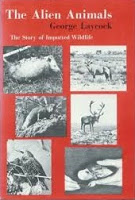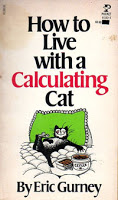the Story of Imported Wildlife
by George Laycock
This older book is about animals that humans have deliberately moved to new areas of the globe- sometimes the species they wished to see established failed to survive long term, many more thrived- often with disastrous consequences, (which we didn\’t seem to be able to learn from). Although the book is cautionary about the merits of importing exotic wildlife into new areas, it didn\’t have a lot of proof why this was a bad idea, and more often than not lauded efforts (reporting governments spending thousands) to put wild animals in places they had not lived before.
Some of the myriad examples laid out in the book: Barbaray sheep, oryx and kudu (from Africa) in New Mexico, ring-necked pheasants from Asia brought to North America, brown trout from Chile introduced in New Zealand, North America and many other places, striped bass moved from the Atlantic coast to the Pacific (and even to inland bodies of water), wild boars from Russia introduced into the Great Smoky Mountains, various songbirds (most notably the house sparrow, the European starling and rock pigeons) scattered all over the place- just because people missed them when they moved to new countries, gray squirrels from America to England, the nutria (a large aquatic rodent) from South America to Louisiana, the mongoose from India to Jamaica (and many other places also). I grew up knowing that chukars (a partridge) live in eastern Washington state- but they\’re originally from Asia. The burros that roam arid regions of the southwest here were imported from Africa. And of course there\’s the famous example of European rabbits introduced to Australia.
A lot of these cases I had not heard of before, so I looked some of them up to see how well they had \”taken\” in the long run. Unfortunately, most of the animals are still where they were transported. A few fitted into their new ecosystems nicely, most shouldered out native species or ravaged the landscape. It\’s horrendous the amount of animals that were introduced to New Zealand and Hawaii, wiping out many native bird species. This book will sit on my shelf next to Where Do Camels Belong?– it\’s the same topic, just with a different viewpoint. When Laycock wrote this one, \’acclimitisation societies\’ were still in existence- their reason being just to bring exotic species into new locales! Usually because sportsmen wanted more animals around for hunting purposes.
Rating: 2/5 240 pages, 1966






